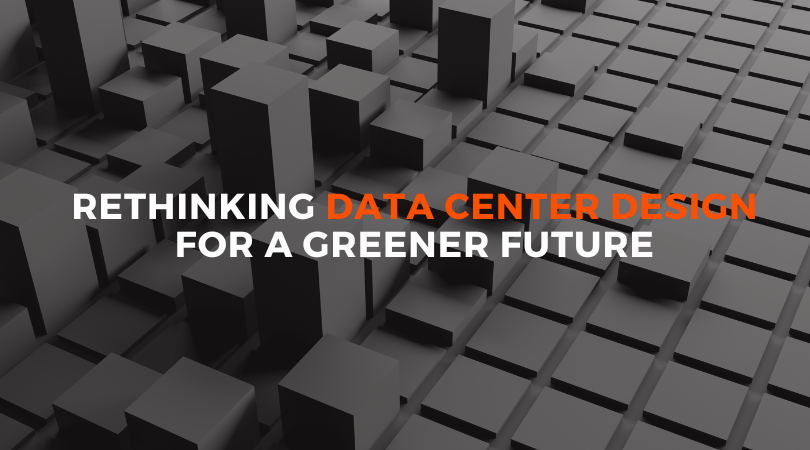Rethinking Data Center Design for a Greener Future
A holistic design approach—one that weaves sustainability into every aspect of data center infrastructure—is the key to ensuring that these digital powerhouses not only support today’s tech landscape but also contribute to a greener, more resilient future. From innovative energy solutions to waste reduction strategies, the future of data centers is as much about environmental stewardship as it is about technological advancement. The question is no longer if we can make data centers sustainable—it’s how we can do it, and how quickly.
Maximizing Resource Efficiency: A Critical Pillar of Sustainability
Data centers are the backbone of our digital infrastructure, but they come with a heavy environmental footprint. From the massive amounts of energy consumed to the raw materials used in construction, the resource demands are significant. The key to reducing this footprint lies in resource management, which ensures every watt of energy and every material is used efficiently and thoughtfully.
By adopting practices like solar and wind power integration, data centers are reducing their reliance on non-renewable energy sources. In fact, some data centers now capture waste heat, repurposing it to heat buildings or fuel industrial processes. This creative thinking transforms what would have been a byproduct into a valuable resource. Even the materials used for cables and servers are under scrutiny, with a focus on reducing e-waste through smarter recycling strategies. This is a perfect example of how sustainability doesn’t just improve the bottom line—it transforms how we think about waste and efficiency.
Turning Waste into a Resource: The Power of Repurposing
In a world where data is king, managing waste is critical. But it’s not just about cutting back; it’s about finding ways to turn waste into an asset. One of the most remarkable innovations in sustainable data center design is the concept of heat reuse. Rather than letting servers’ excess heat escape into the environment, data centers are now harnessing that heat to warm buildings or even generate power. By focusing on turning waste into a resource, the industry is reducing greenhouse gas emissions and cutting down on the need for additional energy. It’s an example of how today’s waste can be tomorrow’s solution.
Another key aspect of waste reduction lies in electronic waste (e-waste) recycling. As technology evolves, old equipment often gets discarded, but by adopting a holistic design, data centers are keeping this waste out of landfills. Equipment is refurbished, reused, and responsibly recycled, ensuring that valuable materials stay in circulation rather than polluting the planet.
Alternative Energy: The Renewable Revolution in Data Centers
The reliance on fossil fuels has long been a significant contributor to environmental degradation, but the energy landscape is changing. Renewable energy is no longer just a buzzword—it’s a necessity for a sustainable future. Data centers, which consume enormous amounts of energy, are now leading the charge toward a greener future by embracing renewable sources like solar, wind, and hydroelectric power.
Many forward-thinking data centers are installing solar panels on their rooftops or surrounding land, contributing to a decentralized energy grid. Wind turbines and hydropower solutions are also being incorporated to provide a steady stream of clean energy. This proactive approach not only reduces the carbon footprint of data centers but also sets an example for the entire tech industry.
More importantly, a holistic design doesn’t stop with energy procurement. By integrating smart energy storage systems, such as large-scale batteries, data centers can store excess power generated during off-peak hours and release it back into the grid when demand surges. This creates a more resilient and sustainable energy ecosystem.
Circular Economy: Closing the Loop for Sustainability
The traditional “take, make, dispose” model of production is no longer viable in an age of sustainability. For data centers to meet the challenges of a growing digital world while protecting the planet, a circular economy model is essential. This approach emphasizes reusing, refurbishing, and recycling materials to minimize waste, and it extends to both the hardware used in data centers and the energy consumed.
A circular economy rethinks the entire lifecycle of equipment. Servers and other hardware are designed to be durable, with modular components that can be upgraded rather than replaced. When hardware reaches the end of its useful life, it’s either recycled into new materials or refurbished and repurposed. This drastically reduces the need for new raw materials and minimizes the generation of e-waste. Data centers that embrace circularity help reduce the environmental impact of production while increasing resource efficiency.
Circularity also applies to energy use. Instead of using energy once and letting it dissipate, holistic designs maximize energy efficiency, transforming energy into usable resources in a closed-loop system. This approach reduces both resource extraction and waste, creating a sustainable, future-proof model.
Innovative Design: Building for a Sustainable Tomorrow
The key to all these initiatives is innovation. A holistic approach to data center design means thinking beyond conventional solutions and imagining what’s possible for the future. As the demand for digital services continues to grow, there’s no room for outdated models. By incorporating sustainability at every level—from energy management to waste reduction and the circular economy—data centers are future-proofing not just their operations, but the environment.
As the industry continues to evolve, the design of data centers must embrace innovation that leads to sustainability. From implementing next-generation cooling systems that use natural resources more efficiently to leveraging AI for smarter energy management, the possibilities are endless. These innovative solutions aren’t just about keeping up with demand; they’re about shaping a new standard for what it means to be environmentally conscious in a tech-driven world.
A Greener Future: Tech’s Role in Sustainability
The need for sustainable, energy-efficient data centers has never been greater. But sustainability isn’t just a buzzword—it’s a call to action. A holistic approach to data center design ensures that technology’s rapid growth doesn’t come at the expense of the planet. It’s about making decisions that will benefit both today’s digital infrastructure and tomorrow’s world.
By focusing on resource management, waste reduction, renewable energy, and circularity, data centers are demonstrating how the tech industry can grow responsibly. As we look ahead, the integration of these sustainable practices will continue to drive both technological innovation and environmental preservation, ensuring that the future of technology is one that works for everyone.

